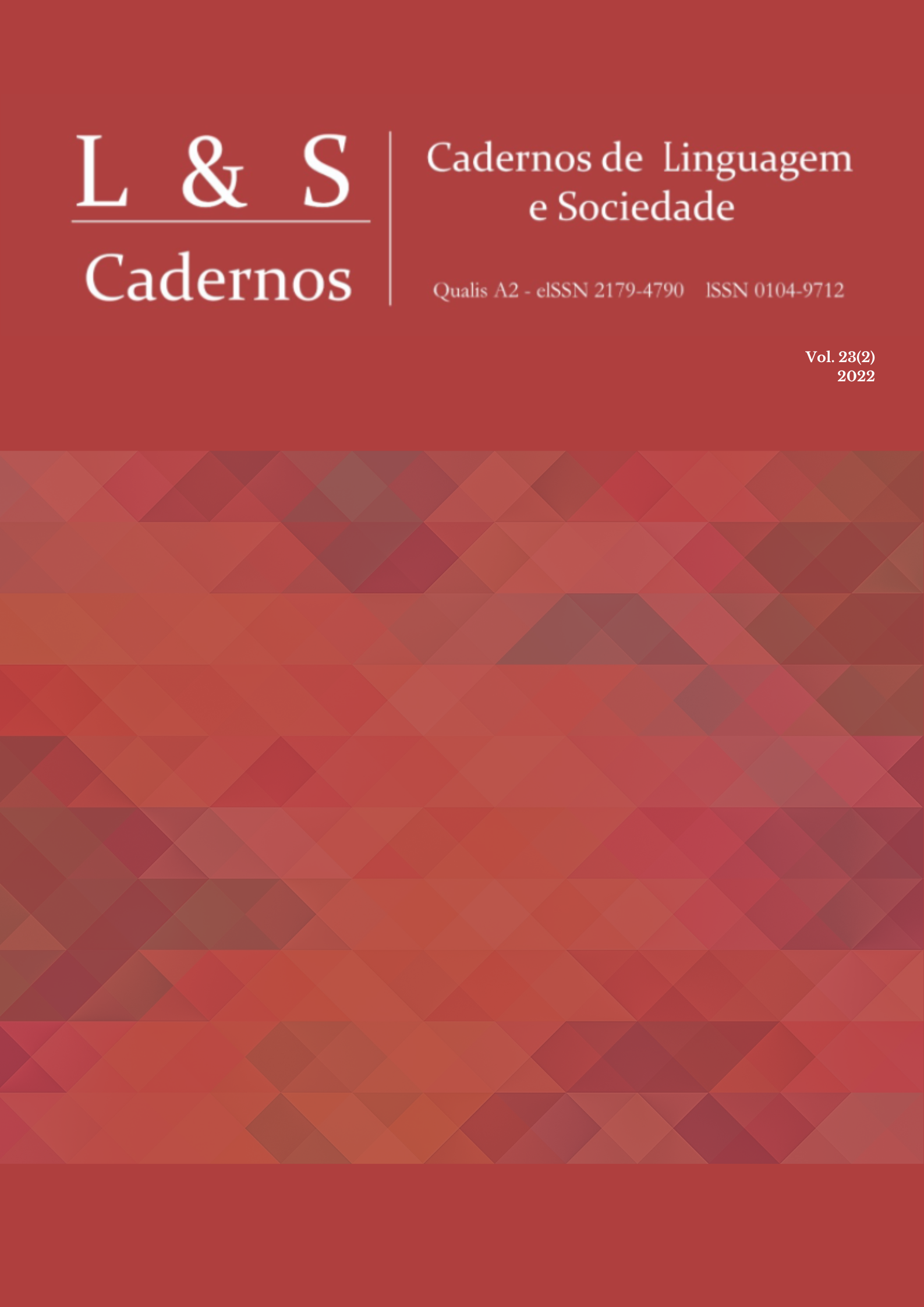WHY DO WE USE PROFANITY IN INTERACTIONS?
DOI:
https://doi.org/10.26512/les.v23i2.43425Keywords:
Expletive, Interaction, Conversational analysis, Interactional SociolinguisticsAbstract
The issue of the use of profanity is a fact of interaction, although people despise or do not assume their presence in the discourse. However, we know that people resort to profanity in their daily interactions to express varied feelings. In this sense, to better understand why profanity is present in the interactional situation, we collected data from a perception questionnaire applied to participants from different social profiles. The analysis of these data was based on Interactional Sociolinguistics with a focus on the postulates of enunciation context (HANKS, 2008). The relevance of this work is justified by the social importance and academic interest in relation to the use of profanity in society and the contempt of this same society regarding this use despite its expressiveness in the interactional act.
Downloads
References
FERREIRA, Aurélio Buarque de Holanda, 1910-1989. Miniaurélio; o minidicionário da língua portuguesa. Curitiba: Positivo, 2004
GOFFMAN, Erving. A representação do eu na vida cotidiana. 8 ed. Petrópolis: Vozes, 1999.
GOFFMAN, Erving. Footing. In: RIBEIRO, Branca Telles; GARCEZ, Pedro M. Sociolinguística Interacional. Porto Alegre: Edições Layola, 2002. p. 107-148.
GOFFMAN, Erving. Ritual de interação: ensaios sobre o comportamento face a face. Petrópolis: Vozes, 2011.
GRICE, Paul. Logic and conversation. In: COLE, P; MORGAN, J.L. (Ed) Sintaxe and semantics. New York: Academic Press, 1975.
GUIMARÃES, Eduardo. Os limites de sentido; Um Estudo Histórico e Enunciativo da Linguagem. Campinas, SP. Pontes, 1995.
GUMPERZ, John J. Discourse strategies. United Kingdom, Cambridge University Press, 1982. Vol. 1.
GUMPERZ, John J. Interactional Sociolinguistics: a personal perspective. In: SCHIFFRIN, Deborah; TANNEN, Deborah; HAMILTON, Heidi E. The handbook of discourse analysis (Eds). Australia. Blackwell, 2003.
HANKS, William F. Língua como prática social; das relações entre língua, cultura e sociedade a partir de Bourdieu e Bakhtin. Org. e Tradução Anna Christina Bentes, Renato Cabral Rezende, Marco Antônio R. Machado. São Paulo: Cortez, 2008.
HOUAISS, Antônio. Pequeno dicionário Houaiss da língua portuguesa. Instituto Antonio Houaiss de Lexicografia. São Paulo: Moderna, 2015.
OLIVEIRA, Maria do Carmo L; PEREIRA, Maria das Graças D. A Sociolinguística e Análise do discurso. In: MOLLICA, Maria Cecilia; FERRAREZI, Celso Junior. Sociolinguística, sociolinguísticas: uma introdução. São Paulo: Editora Contexto, 2016, p. 123-134.
ORSI, Vivian. Tabu e preconceito linguístico. ReVEL; v. 9; no. 17; 2011 PALAVRÃO. In: Dicio; Dicionário Online de Português. Disponível em: https://www.dicio.com.br/palavrao/. Acesso em: 21 mar. 2022.
PALAVRÃO. In: Dicionário Informal. Disponível em: https://www.dicionarioinformal.com.br/palavr%c3%a3o/ / Acesso em: 10 maio 2022.
RAJAGOPALAN, Kanavillil. Pragmática. In: MOLLICA, Maria Cecilia; FERRAREZI, Celso Junior. Sociolinguística, sociolinguísticas: uma introdução. São Paulo: Editora Contexto, 2016. p. 197-204.
TANNEN, Deborah; WALLAT, Cynthia. Enquadres interativos e esquemas de conhecimento em interação: exemplos de um exame/consulta médica. In: RIBEIRO, Branca Telles; GARCEZ, Pedro M. Sociolinguística Interacional. São Paulo: Edições Layola, 2002. p. 183-214.
Downloads
Published
How to Cite
Issue
Section
License
Copyright (c) 2022 Cadernos de Linguagem e Sociedade do Programa de Pós-Graduação em Linguística da UnB é licenciado sob uma Licença Creative Commons Atribuição-Uso não-comercial-Vedada a criação de obras derivadas 3.0 Unported.

This work is licensed under a Creative Commons Attribution 4.0 International License.



